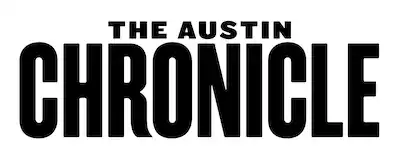BLM Protester Shot In Face With Beanbag Round in 2020 Loses Eye in Surgery
Sam Kirsch was one of many injured by police in May 2020
By Brant Bingamon, April 25, 2025, News
Sam Kirsch was one of many protesters badly hurt during the Black Lives Matter demonstrations that shut down I-35 in May of 2020. Kirsch was shot in the face with a so-called beanbag round, a type of bullet used by police for crowd control. The bullet broke the bones around his eye, nose, and upper jaw, with the worst damage to his left eye. Ever since the bullet hit, Kirsch has been afraid he’d lose the eye.
“It was my biggest fear,” Kirsch told us. “It was the one single thing I was afraid of. Like, I remember initially, moments after I got shot and I got dragged away to relative safety, the first question I asked was, 'Is my eye still there?’ And when I was in hospital, initially, that was the question I kept asking.”
Finally this spring, after almost five years of trying to save the eye and live with its distorted vision, Kirsch decided to have it removed. He underwent surgery to do so on April 10.
“I’m still in the process of grieving the loss of my eye,” Kirsch said. “I had a really good, cathartic crying session a couple of days after, and even in the days leading up to it. I don’t know. What’s really tough is seeing a younger picture of myself. Just seeing a healthy me.”
Kirsch was one of about 30 protesters who climbed onto I-35 on the afternoon of May 31, 2020, and sat down before a line of Austin police in riot gear. The police ordered the protesters to disperse. They fired tear gas and smoke bombs. A canister rolled toward Kirsch’s feet. He and others ran to a grassy slope on the east side of the highway. As Kirsch stepped onto the grass and looked back, a lead-pellet round smashed into his face.
That night Kirsch underwent the first of what, so far, have been 11 surgeries to try to fix the damage. He’s had a metal plate put in his face to stabilize the shattered bones. He’s had a small weight sewn into his eyelid to help it close properly. He’s had a nerve graft in hopes of addressing the chronic numbness and stinging that radiates up from his gums. He’s had several surgeries hoping to help minimize the blurring, distortion, and double vision that doctors told him he’d learn to live with, but that he never did.
“I tried all sorts of tricks with glasses, whether it be prisms or blurring or just blocking it out. Eye patching has been a go-to for a long time, but that has also been really uncomfortable physically because I have nerve pain below my eye. I tried occlusive contact lenses. I tried surgery to try to close the pupil shut and it just made it distorted in a different way. So, you know, nothing has been a solution,” Kirsch said.
Like others who were hurt by police during the protests, Kirsch sued the city of Austin for violating his civil rights. According to attorney Rebecca Webber, Kirsch’s case is the last to be resolved.
“It’s been almost five years and all the different major decision makers at the city level at that time are totally gone,” Kirsch said. “I mean, [former city manager] Spencer Cronk, [former police chief] Brian Manley, [former police chief Joseph] Chacon – none of these guys seemed to face any kind of repercussions at all. And I’m not saying that there’s been no progress in five years in the city. But certainly not with anything related to my lawsuit.”
Kirsch told us he had his eye removed so he can move on with his life and that it’s comforting to know that monocular vision is something doctors understand well and that many people live with successfully. But the idealism that led him to climb onto I-35 in 2020 still frames the way he understands his situation.
“I really want to make sure that I didn’t get shot for nothing,” he said. “If I could go back, I would have stayed home that day, but I want to make sure that there is some lasting imprint on the city, that someone will be held responsible, that there will be some kind of justice.”
Copyright © 2025 Austin Chronicle Corporation. All rights reserved.
